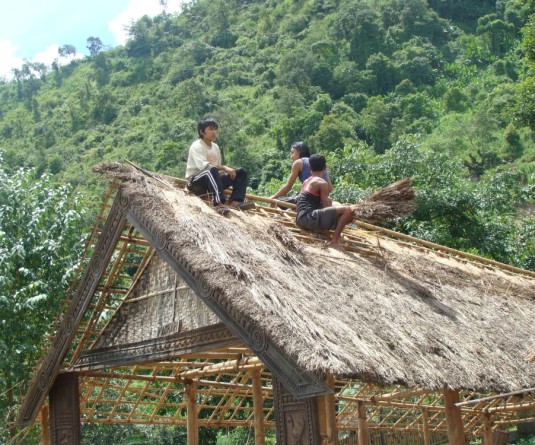A farmer in Nagaland tends to her fruits-- women are active community seedkeepers
Naga women’s indigenous seed preservation knowledge key to biodiversity conservation
Abokali Jimomi
Dimapur | April 12
Women have been our community seed-keepers for generations passing down traditional knowledge through oral transmission: the selection and storage of seeds such as millets, beans, rice, cucurbits, tuber crops and medicinal herbs. Native seeds possess the advantage of evolving and adapting to local climatic conditions and soil types over a period of time; developing defense mechanisms against diseases and pests, needing low maintenance, and crucial for continuance of a thriving local ecosystem, providing livelihood sources for many. However, our age-old indigenous seed-keeping system is in danger of vanishing forever due to market forces, changing climatic patterns and changing socio-economic trends.
Farming is not the sought-after career choice for young people in Nagaland for many reasons. For us, a farmer is usually stereotyped as someone who is uneducated, “un-posh” and poor. Young people migrate to cities seeking better jobs. It is becoming a trend to hire “illegal immigrants” for farming jobs in many areas.
An Agriculture Science graduate said, “Hired farmers around Dimapur are producing large volumes of vegetables such tomatoes and cabbage that, during peak season, even cows refuse to eat… these are non-indigenous seeds, and one alarming factor is the unregulated use of pesticides and herbicides such as Roundup [Glyphosate, Monsanto’s controversial herbicide], nobody actually checks what and how much goes in. Moreover, these hired immigrants are cultivating just for profit.”
North East India falls under the Indo-Burma Biodiversity Hotspot. Though it hosts a vast genetic resource pool, many species endemic to the region are under threat. Humans, wildlife and vegetation are interdependent on each other; if the next generations of Nagas completely leave farming, after this generation of farmers retires, then we are in danger of losing valuable knowledge of our region’s ecosystem -- our traditional knowledge systems mostly remaining undocumented till date.
For oral cultures like ours, if an elderly person dies, the traditional knowledge she possesses will die with her. Loss of indigenous seeds would mean reduction of genetic diversity, loss of cultural practices, such as local culinary practices, and the unique indigenous ways of life that are essential to the survival of cultural biodiversity.
Alika, a young Naga woman said, “My mother preserves seeds we sow in the farm… after harvest, she knows which seed to select and store. Like beans and garlic tied and hung above the fireplace; chili and pumpkin seeds in bamboo jars… she just knows how to do it, my grandmothers practiced this.” Alika is pursuing a different career path and may not learn this art. For a culture to live, it has to be practiced, but with many children of seed-keepers discontinuing farming, traditional knowledge could be lost, unless conscious measures are taken. Innovations can only sprout from the base of existing knowledge.
Professor Mandi, a scientist at the Bose Institue, Kolkata said, “NE India and Nagaland has to urgently document plant resources, but with authentic markers… the State Government must ensure that locals are the owners of this bio resource; Bio-Piracy is real. Climate Change is another crucial reason.”
Nobel laureate economist, Joseph E. Stiglitz, who visited organic farmers in Bihar, said, “Indian farmers are better than scientists,” and that their inspiring practices should be researched and replicated. The same could be said for Naga farmers who are the guardians of our age-old, useful indigenous traditional wisdom.
Most seeds supplied to villagers through various government schemes and projects are non-indigenous varieties, but many Naga farmers prefer their local varieties: “look at this ‘Agri-ginger’ it is large but tasteless, nothing compared to our ‘originals’,” said a farmer. She added, “I tried this big non-local Brinjal, it feels abnormal… like pumped with air.”
More research and documentation has to be done in this area and inclusion of this knowledge in the education curriculum about local resources should become mandatory. Improved methods of sustainable farming, re-introduction of local varieties, and creation of community seed-banks are required for the environment, food security and safety of the region.






